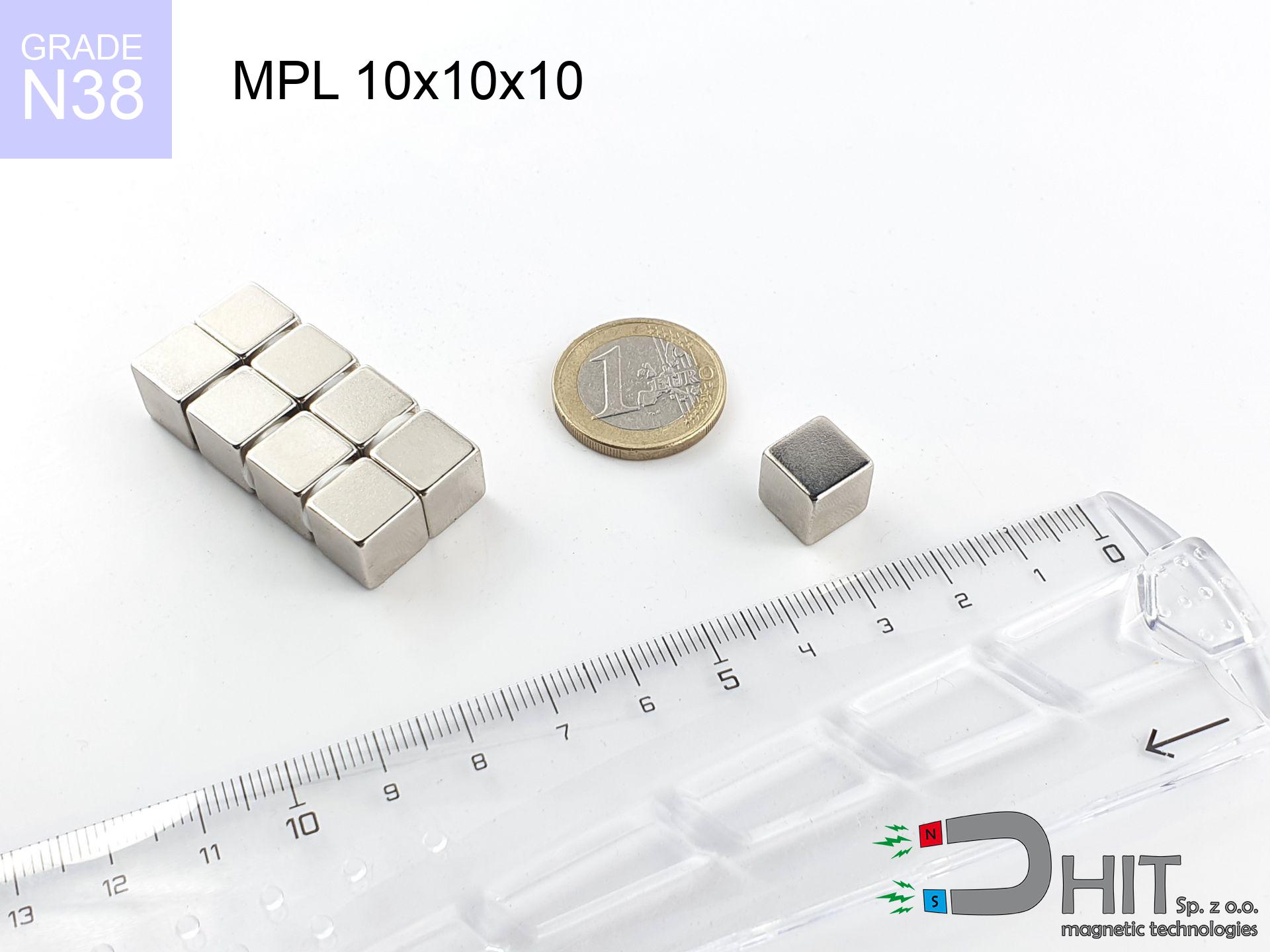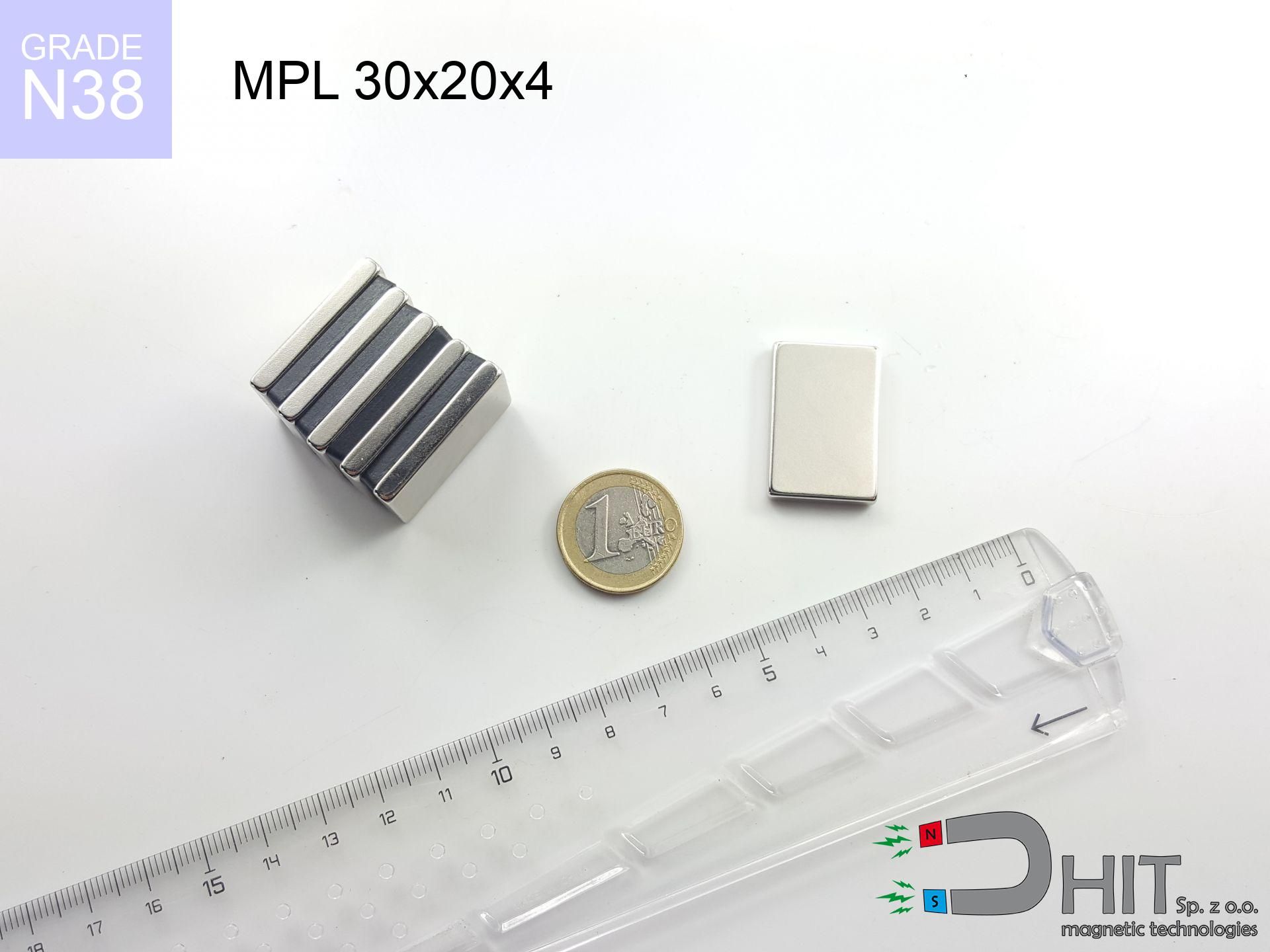UMP 75x24 [M8+M10] GW F200 Lina / N38 - search holder
search holder
Catalog no 210382
GTIN/EAN: 5906301814016
Diameter Ø
75 mm [±1 mm]
Height
24 mm [±1 mm]
Weight
0.9 g
Load capacity
280.00 kg / 2745.86 N
Coating
[NiCuNi] Nickel
230.00 ZŁ with VAT / pcs + price for transport
186.99 ZŁ net + 23% VAT / pcs
bulk discounts:
Need more?
Give us a call
+48 22 499 98 98
or send us a note using
form
through our site.
Strength along with form of a neodymium magnet can be calculated on our
power calculator.
Order by 14:00 and we’ll ship today!
💡 Check why professionals choose Dhit over cheap substitutes
Don't be fooled by amateur online tests – go for certified quality and specific parameters that guarantee success:
- 📏 Magnet thickness in the casing (min. 10mm) – This is what matters most! Thin magnets are weak. Thanks to the 1cm thickness of N52 neodymium, your magnet "sees" metal even through thick rust and mud.
- 🛡️ Armored protection (Black Epoxy) – Forget about rust. This coating doesn't chip when hitting rocks and protects the magnet in water much better than regular nickel, which fails quickly.
- 🧲 Eyelets that don't steal power – Made of special non-magnetic steel, so they don't stick to the magnet and don't block the force. Important: mount only one eyelet at a time! Using 3 at once is a mistake that weakens the magnet.
- 🧶 Certified rope (min. 8mm) – You gain the certainty that your gear won't stay at the bottom. It's thick and comfortable, so it doesn't cut your fingers when pulling out heavy scrap metal.
- 🚀 Our advantage: We are the only ones combining the strongest N52 neodymium (10mm thick) with non-magnetic eyelets. This is real power and durability you won't find anywhere else.
Invest in solid equipment and enjoy the results!
Technical details - UMP 75x24 [M8+M10] GW F200 Lina / N38 - search holder
Specification / characteristics - UMP 75x24 [M8+M10] GW F200 Lina / N38 - search holder
| properties | values |
|---|---|
| Cat. no. | 210382 |
| GTIN/EAN | 5906301814016 |
| Production/Distribution | Dhit sp. z o.o. |
| Country of origin | Poland / China / Germany |
| Customs code | 85059029 |
| Diameter Ø | 75 mm [±1 mm] |
| Height | 24 mm [±1 mm] |
| Weight | 0.9 g |
| Load capacity ~ ? | 280.00 kg / 2745.86 N |
| Coating | [NiCuNi] Nickel |
| Manufacturing Tolerance | ±1 mm |
Magnetic properties of material N38
| properties | values | units |
|---|---|---|
| remenance Br [min. - max.] ? | 12.2-12.6 | kGs |
| remenance Br [min. - max.] ? | 1220-1260 | mT |
| coercivity bHc ? | 10.8-11.5 | kOe |
| coercivity bHc ? | 860-915 | kA/m |
| actual internal force iHc | ≥ 12 | kOe |
| actual internal force iHc | ≥ 955 | kA/m |
| energy density [min. - max.] ? | 36-38 | BH max MGOe |
| energy density [min. - max.] ? | 287-303 | BH max KJ/m |
| max. temperature ? | ≤ 80 | °C |
Physical properties of sintered neodymium magnets Nd2Fe14B at 20°C
| properties | values | units |
|---|---|---|
| Vickers hardness | ≥550 | Hv |
| Density | ≥7.4 | g/cm3 |
| Curie Temperature TC | 312 - 380 | °C |
| Curie Temperature TF | 593 - 716 | °F |
| Specific resistance | 150 | μΩ⋅cm |
| Bending strength | 250 | MPa |
| Compressive strength | 1000~1100 | MPa |
| Thermal expansion parallel (∥) to orientation (M) | (3-4) x 10-6 | °C-1 |
| Thermal expansion perpendicular (⊥) to orientation (M) | -(1-3) x 10-6 | °C-1 |
| Young's modulus | 1.7 x 104 | kg/mm² |
Chemical composition
| iron (Fe) | 64% – 68% |
| neodymium (Nd) | 29% – 32% |
| boron (B) | 1.1% – 1.2% |
| dysprosium (Dy) | 0.5% – 2.0% |
| coating (Ni-Cu-Ni) | < 0.05% |
Sustainability
| recyclability (EoL) | 100% |
| recycled raw materials | ~10% (pre-cons) |
| carbon footprint | low / zredukowany |
| waste code (EWC) | 16 02 16 |
Other offers
Advantages as well as disadvantages of neodymium magnets.
Benefits
- They virtually do not lose strength, because even after ten years the decline in efficiency is only ~1% (according to literature),
- Neodymium magnets are remarkably resistant to loss of magnetic properties caused by external interference,
- By covering with a reflective coating of nickel, the element has an nice look,
- They show high magnetic induction at the operating surface, which affects their effectiveness,
- Due to their durability and thermal resistance, neodymium magnets can operate (depending on the form) even at high temperatures reaching 230°C or more...
- Possibility of accurate machining as well as adapting to complex requirements,
- Significant place in advanced technology sectors – they find application in data components, motor assemblies, advanced medical instruments, and modern systems.
- Relatively small size with high pulling force – neodymium magnets offer strong magnetic field in small dimensions, which makes them useful in miniature devices
Disadvantages
- At strong impacts they can break, therefore we advise placing them in special holders. A metal housing provides additional protection against damage, as well as increases the magnet's durability.
- When exposed to high temperature, neodymium magnets suffer a drop in force. Often, when the temperature exceeds 80°C, their power decreases (depending on the size, as well as shape of the magnet). For those who need magnets for extreme conditions, we offer [AH] versions withstanding up to 230°C
- Due to the susceptibility of magnets to corrosion in a humid environment, we advise using waterproof magnets made of rubber, plastic or other material resistant to moisture, in case of application outdoors
- Due to limitations in producing nuts and complicated forms in magnets, we propose using cover - magnetic holder.
- Possible danger resulting from small fragments of magnets pose a threat, when accidentally swallowed, which is particularly important in the aspect of protecting the youngest. Furthermore, small components of these products can disrupt the diagnostic process medical when they are in the body.
- Higher cost of purchase is one of the disadvantages compared to ceramic magnets, especially in budget applications
Holding force characteristics
Maximum magnetic pulling force – what affects it?
- using a sheet made of low-carbon steel, serving as a ideal flux conductor
- possessing a thickness of minimum 10 mm to ensure full flux closure
- characterized by smoothness
- with zero gap (no paint)
- under axial force direction (90-degree angle)
- in stable room temperature
Magnet lifting force in use – key factors
- Gap between surfaces – every millimeter of separation (caused e.g. by varnish or unevenness) significantly weakens the pulling force, often by half at just 0.5 mm.
- Force direction – catalog parameter refers to detachment vertically. When attempting to slide, the magnet holds much less (often approx. 20-30% of maximum force).
- Wall thickness – the thinner the sheet, the weaker the hold. Magnetic flux penetrates through instead of generating force.
- Material type – the best choice is high-permeability steel. Cast iron may generate lower lifting capacity.
- Plate texture – ground elements ensure maximum contact, which improves force. Uneven metal reduce efficiency.
- Temperature influence – hot environment reduces magnetic field. Too high temperature can permanently demagnetize the magnet.
Lifting capacity was measured using a polished steel plate of suitable thickness (min. 20 mm), under vertically applied force, however under parallel forces the holding force is lower. In addition, even a minimal clearance between the magnet’s surface and the plate lowers the holding force.
Precautions when working with NdFeB magnets
Cards and drives
Powerful magnetic fields can corrupt files on credit cards, HDDs, and storage devices. Maintain a gap of min. 10 cm.
Do not give to children
Product intended for adults. Small elements can be swallowed, causing severe trauma. Keep away from kids and pets.
Implant safety
Patients with a pacemaker must keep an safe separation from magnets. The magnetic field can interfere with the operation of the implant.
Operating temperature
Monitor thermal conditions. Exposing the magnet above 80 degrees Celsius will ruin its magnetic structure and pulling force.
Handling guide
Before use, check safety instructions. Sudden snapping can destroy the magnet or hurt your hand. Be predictive.
Crushing force
Protect your hands. Two powerful magnets will join instantly with a force of massive weight, crushing everything in their path. Be careful!
GPS and phone interference
Note: rare earth magnets generate a field that interferes with sensitive sensors. Maintain a safe distance from your mobile, tablet, and GPS.
Beware of splinters
Despite metallic appearance, the material is delicate and not impact-resistant. Avoid impacts, as the magnet may crumble into hazardous fragments.
Do not drill into magnets
Drilling and cutting of neodymium magnets poses a fire risk. Magnetic powder reacts violently with oxygen and is hard to extinguish.
Metal Allergy
It is widely known that the nickel plating (standard magnet coating) is a strong allergen. If your skin reacts to metals, prevent touching magnets with bare hands or select encased magnets.

![Search magnet UMP 75x24 [M8+M10] GW F200 Lina / N38 - GOLD Series Search magnet UMP 75x24 [M8+M10] GW F200 Lina / N38 - GOLD Series](https://cdn3.dhit.pl/graphics/banners/magnet.webp)
![UMP 75x24 [M8+M10] GW F200 Lina / N38 - search holder](https://cdn3.dhit.pl/graphics/products/ump-75x28-m8+m10-gw-f200-+lina-fuc.jpg)


![UMP 135x40 [M10+M12] GW F600 Lina / N38 - search holder UMP 135x40 [M10+M12] GW F600 Lina / N38 - search holder](https://cdn3.dhit.pl/graphics/products/ump-135x40-m10+m12-gw-f600-+lina-sej.jpg)


